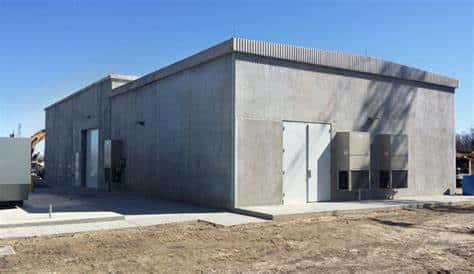Why Concrete Buildings Are Energy-Efficient In Cold Climates In Vista?
 When it comes to constructing buildings in cold climates, energy efficiency is a crucial consideration. Concrete, often regarded as a sturdy and reliable building material, offers unique advantages that make it a standout choice for energy-efficient structures in chilly environments. In this article, we’ll explore five reasons why concrete buildings excel in cold climates.
When it comes to constructing buildings in cold climates, energy efficiency is a crucial consideration. Concrete, often regarded as a sturdy and reliable building material, offers unique advantages that make it a standout choice for energy-efficient structures in chilly environments. In this article, we’ll explore five reasons why concrete buildings excel in cold climates.
- One of the primary reasons concrete buildings are energy-efficient in cold climates is their high thermal mass. Concrete has the ability to absorb, store, and release heat over time. During the day, when sunlight warms the building’s exterior, the concrete absorbs this heat. As temperatures drop at night, the stored heat is gradually released, helping to maintain a more stable indoor temperature. This natural heat regulation reduces the need for constant heating, thereby conserving energy and lowering utility costs.
- Concrete, especially when combined with proper insulation techniques, offers excellent insulation properties. Insulating concrete forms (ICFs) and precast concrete panels are commonly used in cold climate construction. These materials create a well-insulated envelope that minimizes heat transfer between the interior and exterior. As a result, concrete buildings stay warmer in winter and cooler in summer, reducing the demand for heating and cooling systems.
- Concrete buildings can be constructed with a high degree of air tightness, which prevents drafts and heat leakage. Cold air infiltration is a common challenge in cold climates, as it can significantly increase heating requirements. Concrete structures with proper seals and barriers maintain a controlled indoor environment by preventing cold air from seeping in and warm air from escaping. This not only enhances energy efficiency but also ensures occupants’ comfort.
- Due to their thermal mass, insulation properties, and air tightness, concrete buildings in cold climates experience reduced energy consumption for heating purposes. With less reliance on heating systems, occupants can enjoy a comfortable living or working environment without experiencing drastic temperature fluctuations. This reduction in energy consumption not only benefits the environment but also leads to cost savings on energy bills over the long term.
- Concrete is a durable and long-lasting material that can withstand the harsh conditions of cold climates. Its resistance to extreme temperatures, moisture, and freeze-thaw cycles ensures that the building’s energy-efficient features remain effective over time. The longevity of concrete structures minimizes the need for frequent repairs or renovations, reducing the overall environmental impact associated with building maintenance.
FAQs
Are There Any Design Considerations Specific To Maximizing Energy Efficiency In Concrete Buildings For Cold Climates?
Yes, optimizing window placement for solar gain, using insulated concrete forms, and incorporating passive solar design principles are key considerations for energy-efficient concrete buildings in cold climates.
Do Concrete Buildings Feel Cold Due To Their Thermal Mass, Even Though They’re Energy-Efficient?
No, concrete buildings don’t feel cold. The thermal mass of concrete helps maintain a consistent indoor temperature, reducing the need for heating. The building’s interior remains comfortable and cozy.
How Do Concrete Buildings Compare In Terms Of Energy Efficiency To Other Construction Materials In Cold Climates?
Concrete buildings tend to outperform many other construction materials in cold climates due to their thermal mass, insulation properties, and durability. They provide effective energy savings and a stable indoor environment.
Conclusion
Concrete buildings have emerged as a compelling solution for energy-efficient construction in cold climates. With their inherent properties such as thermal mass, insulation, air tightness, reduced energy consumption, and durability, they offer a sustainable way to combat the challenges of chilly weather while promoting comfortable and eco-friendly living and working spaces. As the world continues to prioritize energy efficiency, concrete remains a steadfast choice for creating resilient structures that stand up to the demands of cold climates. For more information, contact Concrete Contractor Vista at (760) 313-6116.